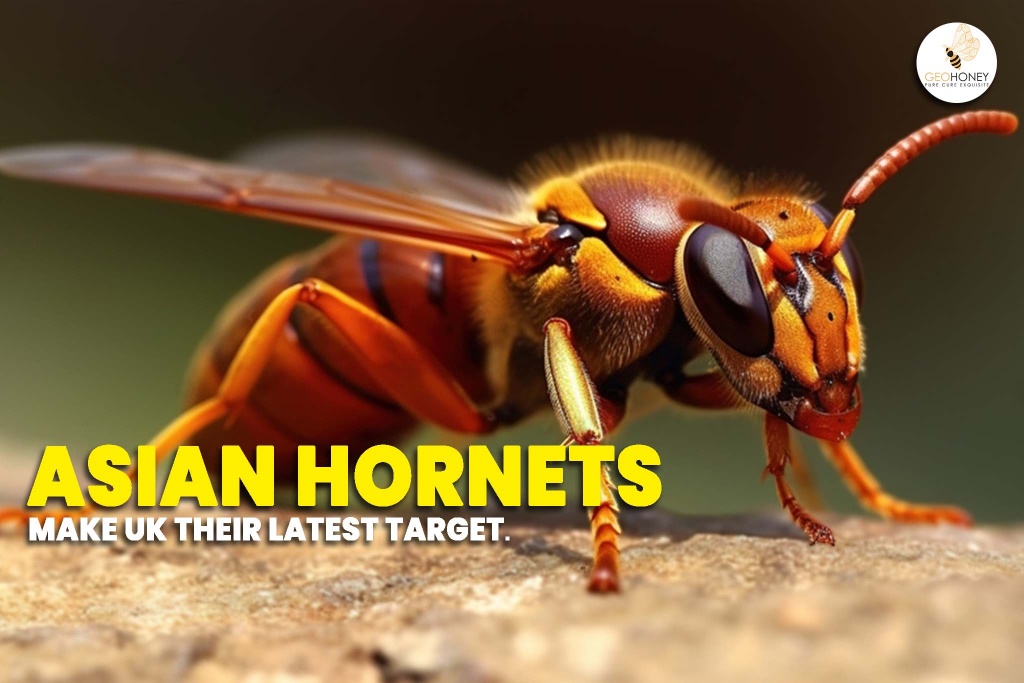- Tokyo: 18:37
- Singapore: 17:37
- Dubai: 13:37
- London: 09:37
- New York: 04:37
Asian Hornets Make UK Latest Target, What Makes Them Such a Menace to European Bees

A startling spike in the number of Asian hornet sightings in the United Kingdom has beekeepers and wildlife enthusiasts on edge. However, the invasive species poses a significant danger to European beekeeping and honey production. Asian hornets (Vespa velutina), which are native to Southeast Asia, are a major honey bee predator. A single Asian hornet is said to be capable of hunting down and devouring up to 50 honeybees per day.
According to research, Asian hornets might cost the French economy €30.8 million (£26.4 million) per year in the worst-case scenario. However, their threat extends beyond bees in a hive. Asian hornets also prey on natural pollinators like bumblebees, threatening the pollination services these organisms provide.
Asian hornets eat more than only other bees. They also make them avoid flowers. According to one study, the presence of these predators reduced flower visits by bumblebees and hoverflies significantly.
Worker hornets were sighted foraging at an apiary in Tetbury in Gloucestershire in 2016, marking the first sighting of Asian hornets in the UK. Since then, concerned citizens and beekeepers have discovered and identified 43 Asian hornet nests in the United Kingdom, primarily in southern areas such as Kent, Hampshire, and Devon.
So far, there have been more confirmed Asian hornet sightings in the UK in 2023 than in the previous five years combined. Despite occasional reports that the Asian hornet has established itself in the UK, there is no proof that these insects can withstand British winters.
The proliferation of invasive Asian hornets is a global phenomenon. Invasive species are responsible for 60% of global plant and animal extinctions, according to a recent research from the Intergovernmental Platform on Biodiversity and Ecosystem Services. Each year, its implied economic cost is estimated to be over US$420 billion (£335 billion).
Getting Across The Border
The Asian hornet (also known as the yellow-legged hornet) was first discovered in Europe in 2004, in the Lot-et-Garonne region of south-western France. It was allegedly introduced to Europe by mistake in a cargo of imported Chinese pottery. Asian hornets have now migrated to neighbouring countries such as Spain, Portugal, Germany, and the United Kingdom. So far in 2023, sightings have been concentrated along the coast in Kent, Dorset, Hampshire, Plymouth, and Weymouth.
According to genetic investigations conducted by the National Bee Unit, which manages bee health programmes in England and Wales, Asian hornets discovered in the UK share the same ancestry as the population on continental Europe. This implies that they are crossing the channel from France on maritime winds, with re-invasions occurring on a yearly basis.
It's possible that the recent spike of sightings in the UK is due to greater summer temperatures reported across Europe in 2023. Hornets require warm weather, such as those found in Asia, to survive. Warmer summers increase the likelihood that they may move into the UK from Europe and survive long enough to be noticed by humans.
Scientists are still unsure what prompted the widespread invasion of 2023. However, a study led by the UK Centre for Ecology and Hydrology is currently ongoing to investigate the underlying reasons.
Why Are They a Threat?
Beekeeping isn't just a European business. In Asia, about 45 million honeybee hives house nearly half of the world's honeybees. All of these bees coexist well with the Asian hornet. So, why are European beekeepers so concerned about an insect that is largely a part of beekeepers' daily lives in Asia? The key is in the breeding process.
European beekeeping has never had to deal with a major predatory threat like the Asian hornet. The European hornet (Vespa crabro), for example, resembles the Asian hornet but is roughly twice as large. However, this species offers little danger to humans or bees. The giant woodwasp (Urocerus gigas) can grow to be approximately 5 cm long (about the size of a house key) and is distributed throughout Europe. This species, on the other hand, is absolutely harmless and quite mild.
Due to the scarcity of native predators, European beekeepers have purposefully bred bees that are simpler to handle and capable of producing more honey. As a result, these bees are defenceless in the face of a formidable predator like the Asian hornet.
Several bee species in Japan, China, and South Korea are far more adept at repelling Asian hornet attacks than their European equivalents. The gigantic honeybee (Apis dorsata) is so enormous that it can suffocate a hornet with its body bulk. Meanwhile, her sisters swarm the intruder, slowly heating it up and roasting it alive—a very efficient defence.
How to Identify Them
Asian hornets are a little bit smaller than European hornets. Their thorax is dark brown, their legs are yellow-tipped, they have a black head, and their face is orange. The Asian hornet's abdomen, which is dark brown with a nearly completely orange fourth segment, may be its most distinguishing feature.
Source: phys.org




So how does it differ from the other bees in Europe?? In fact, they are all the same in making honey, and it benefits us all.